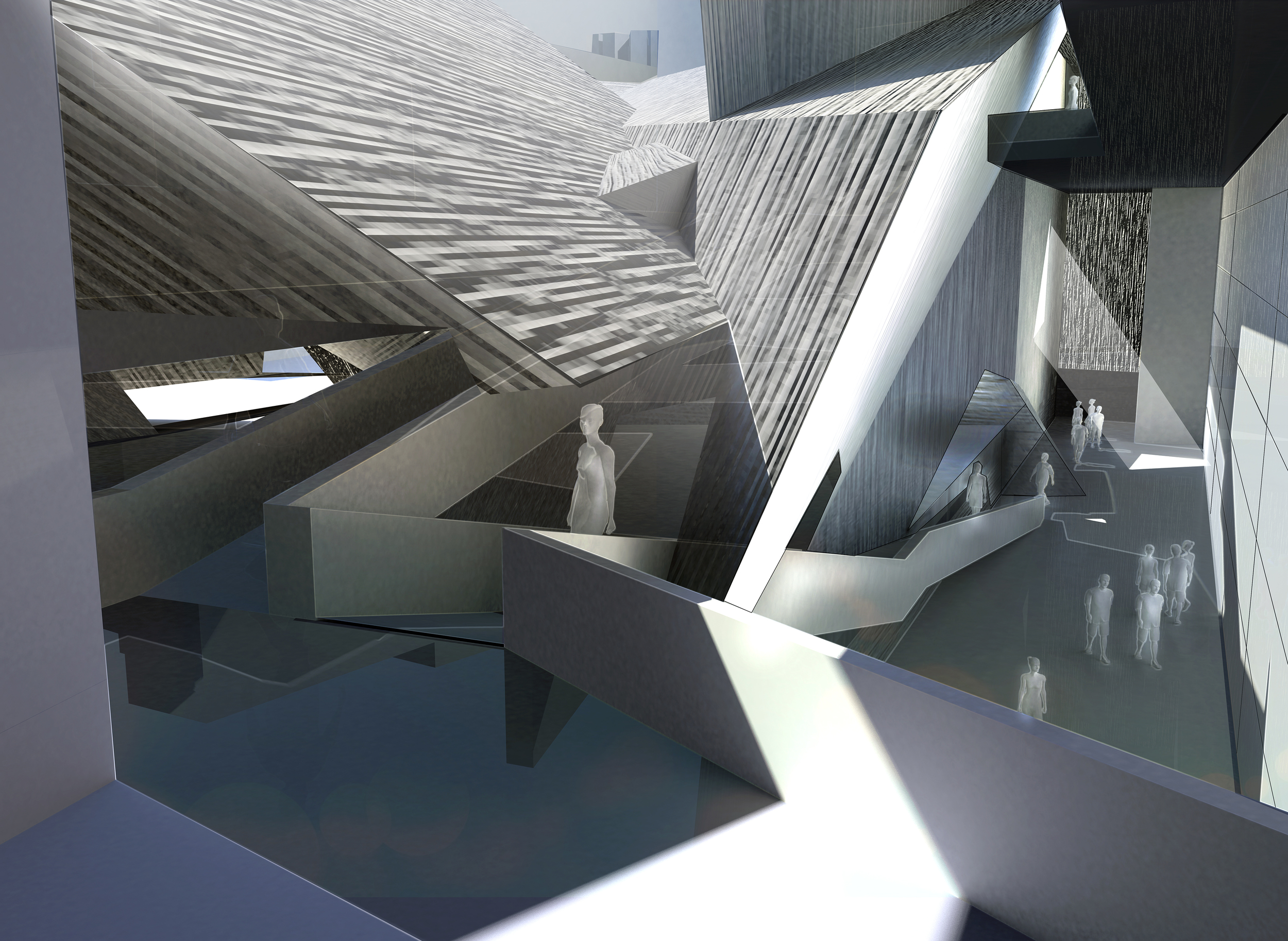
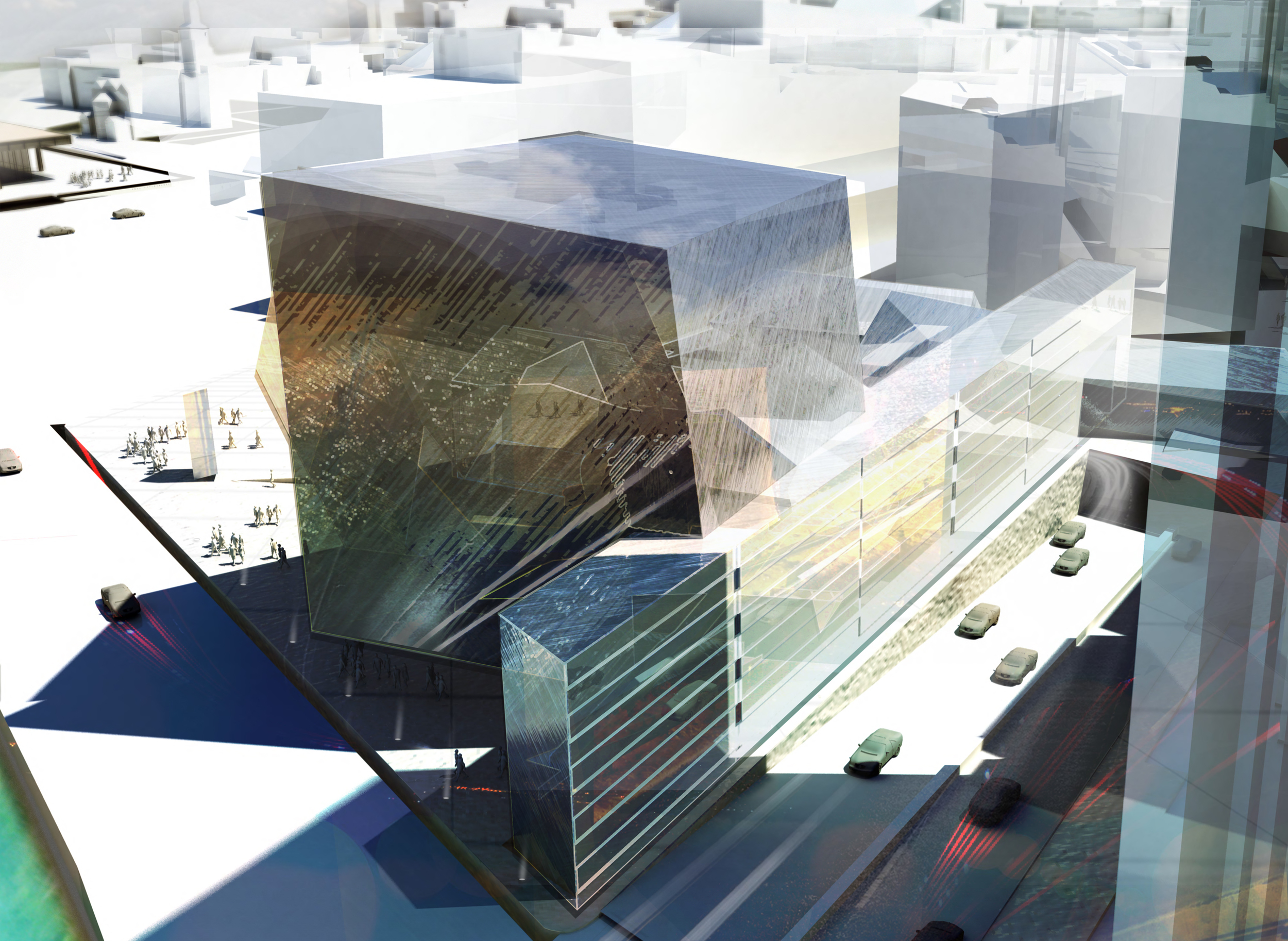
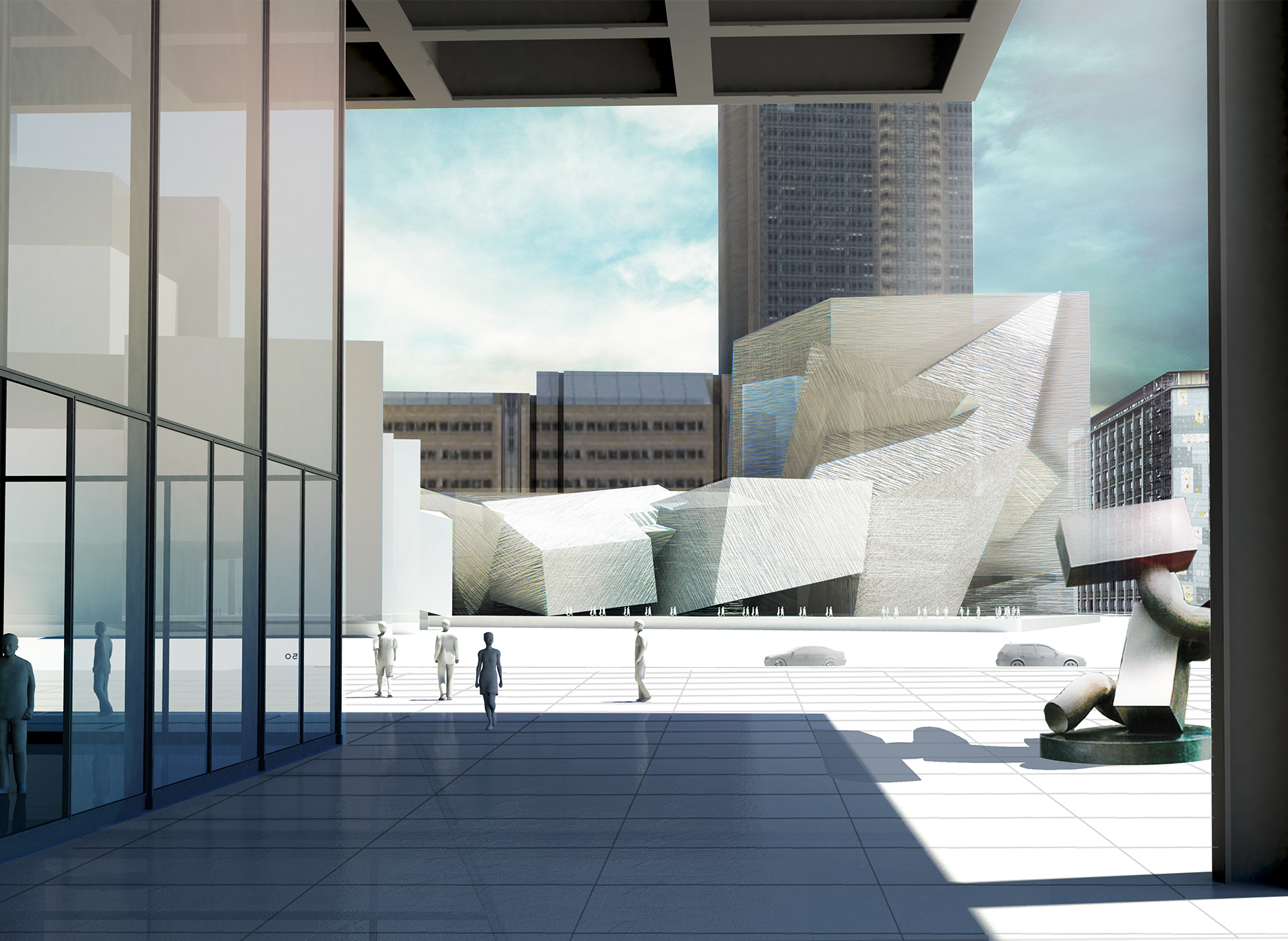
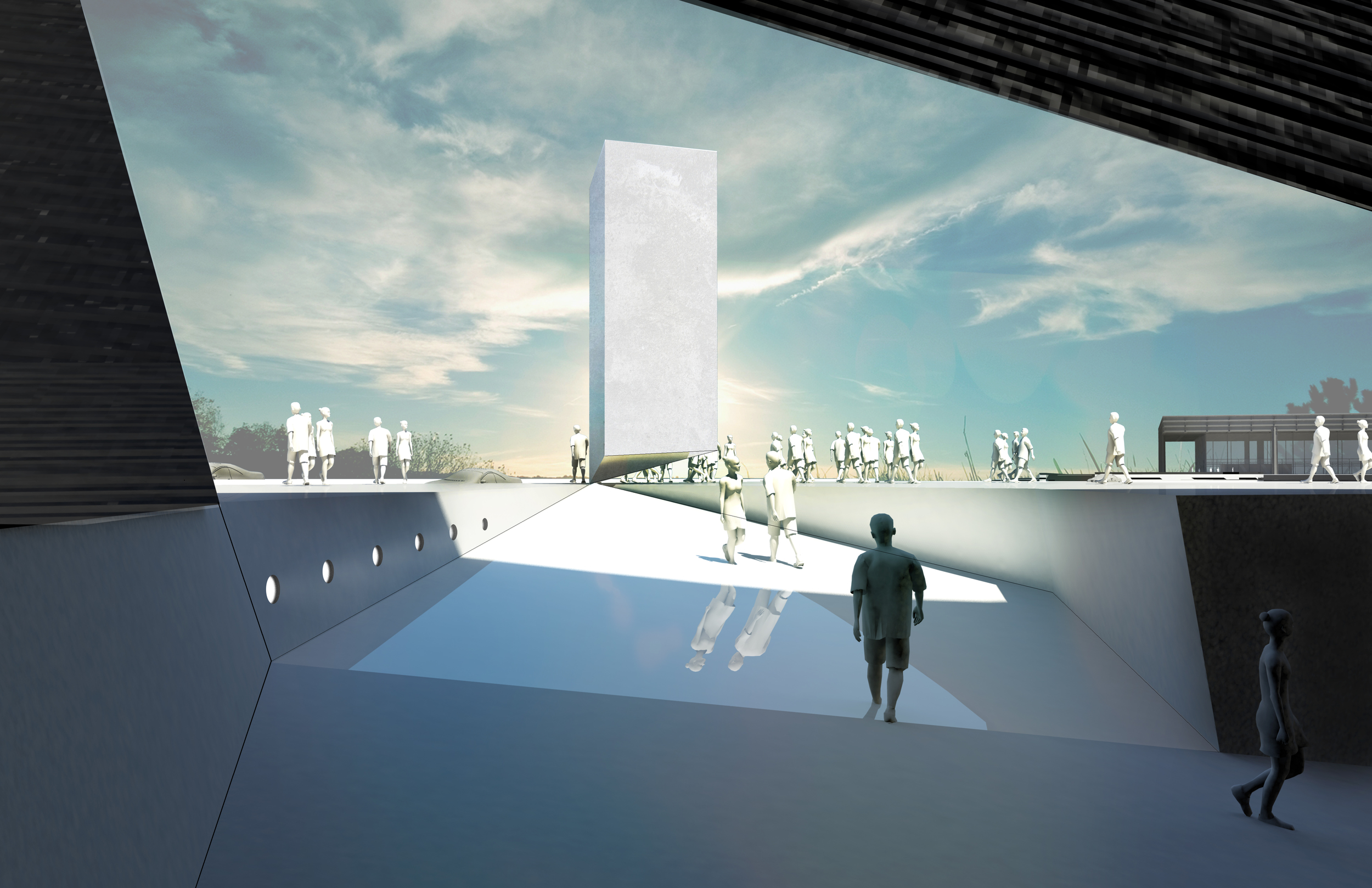
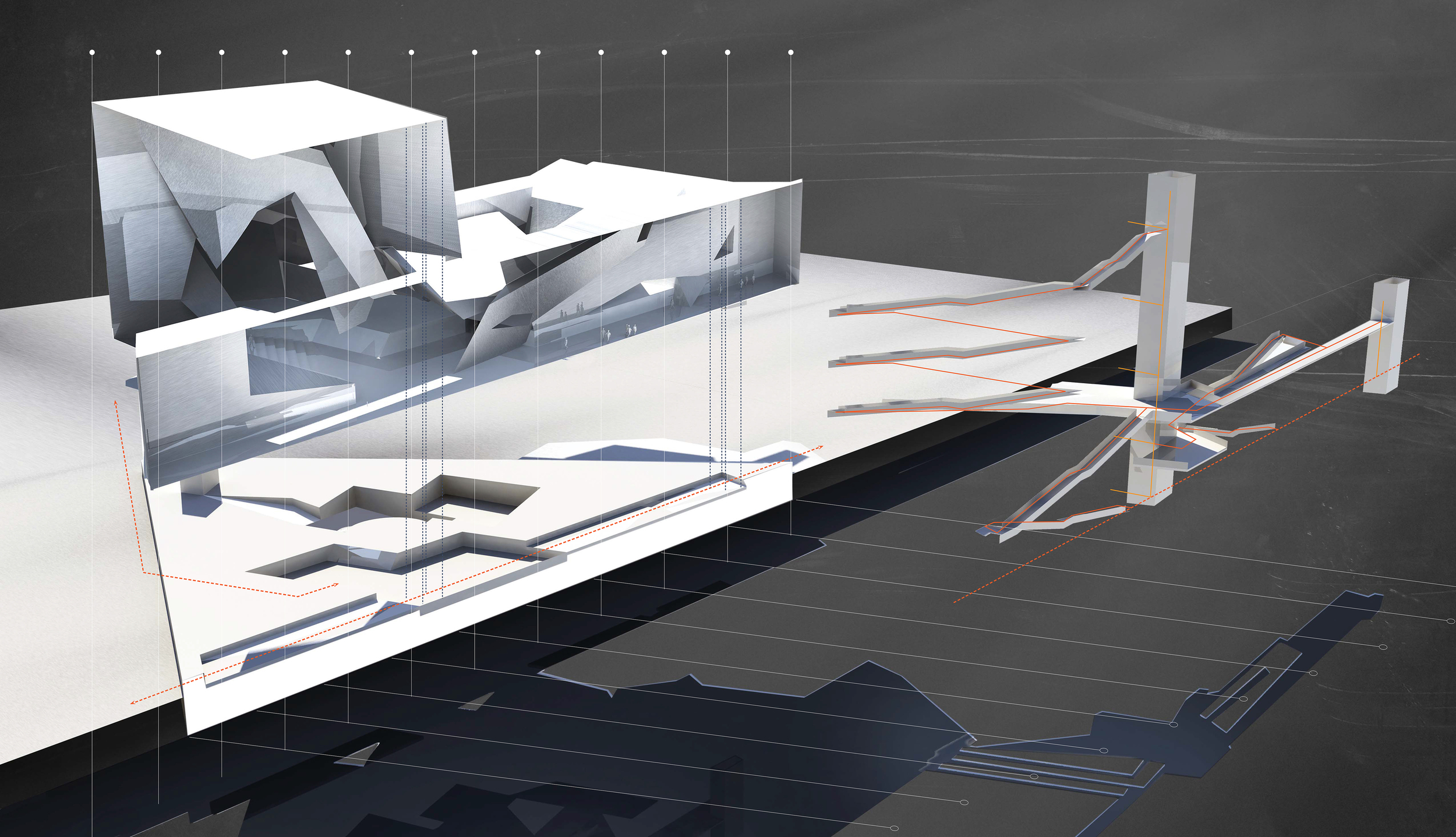
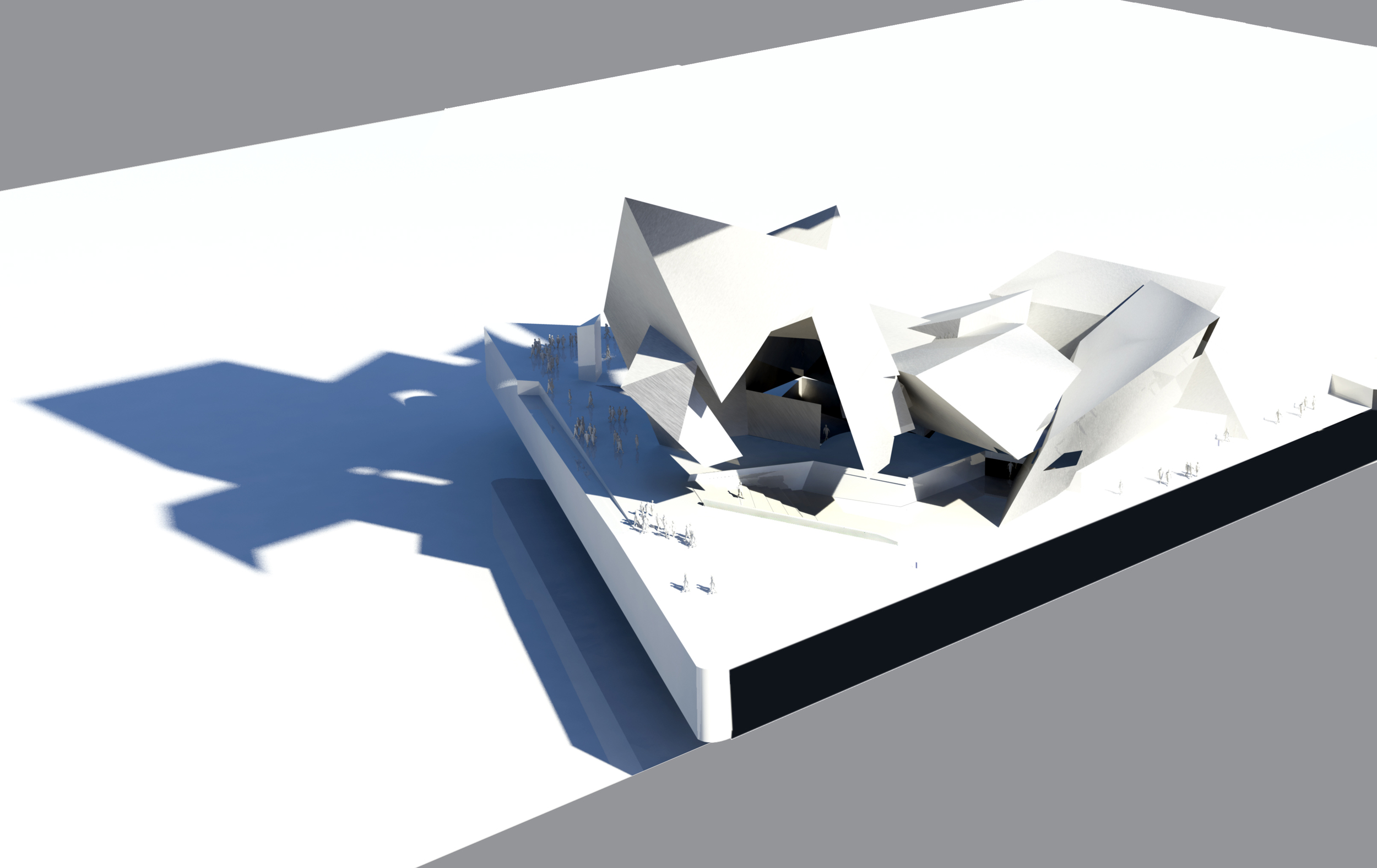
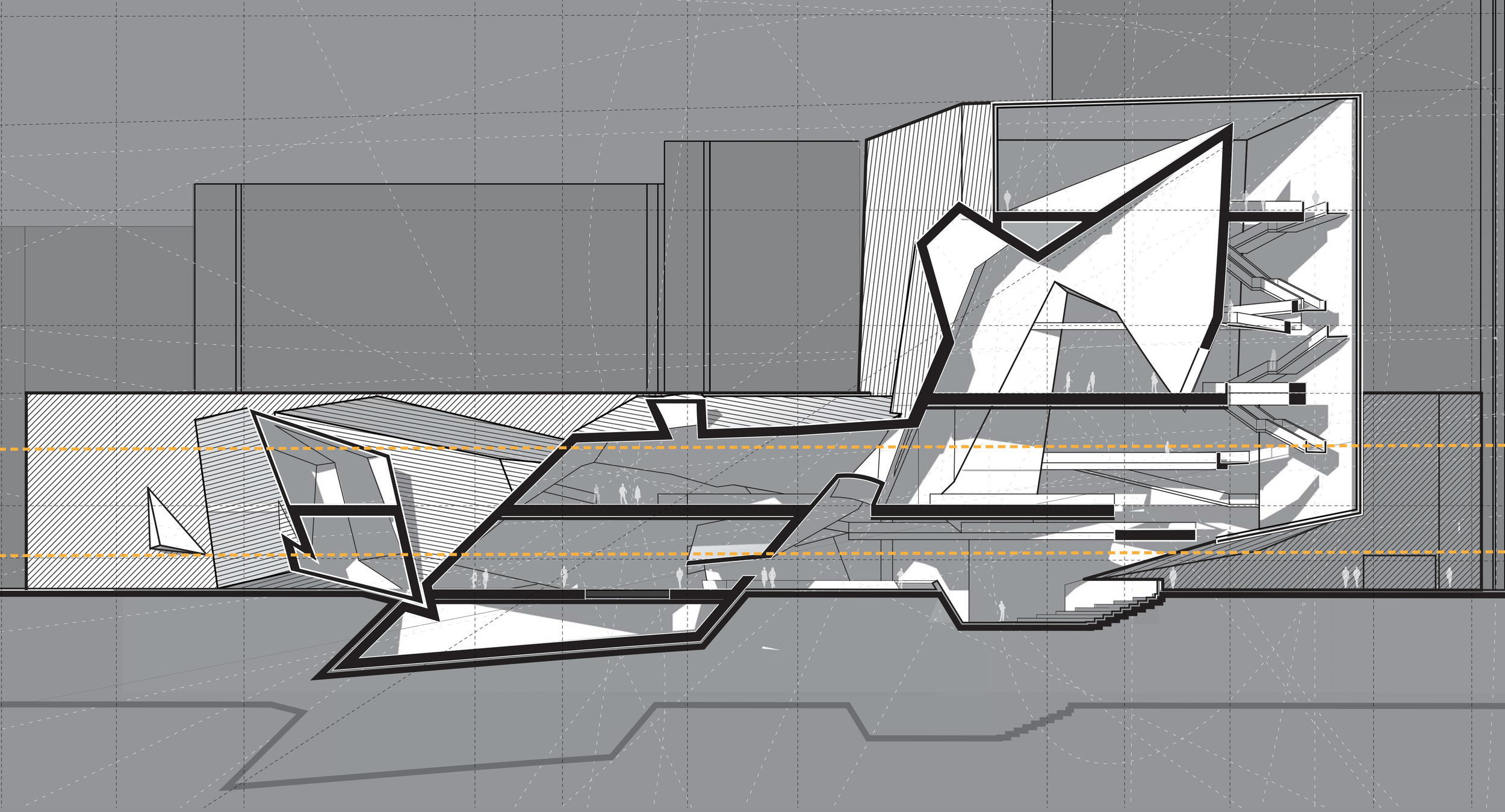

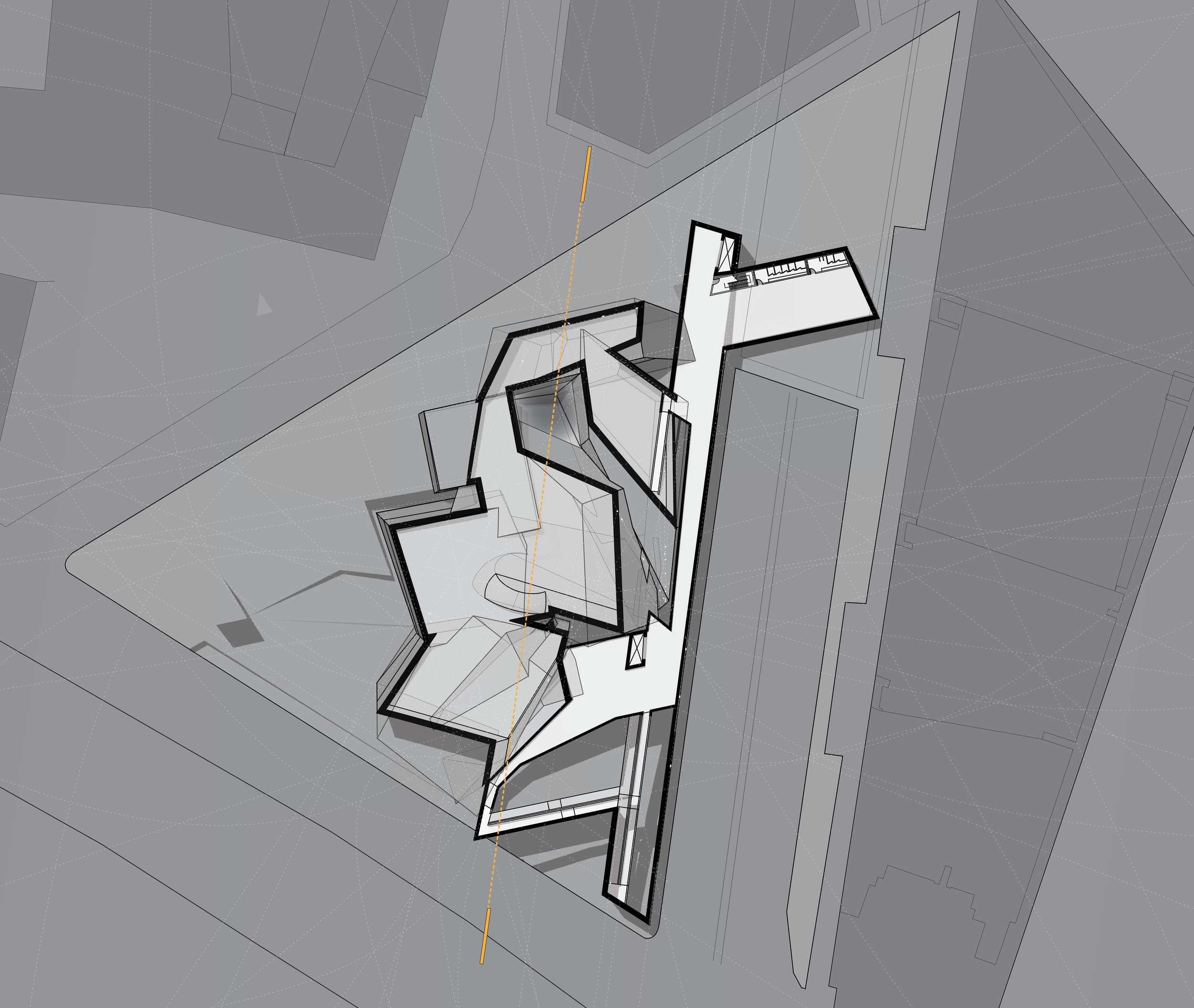

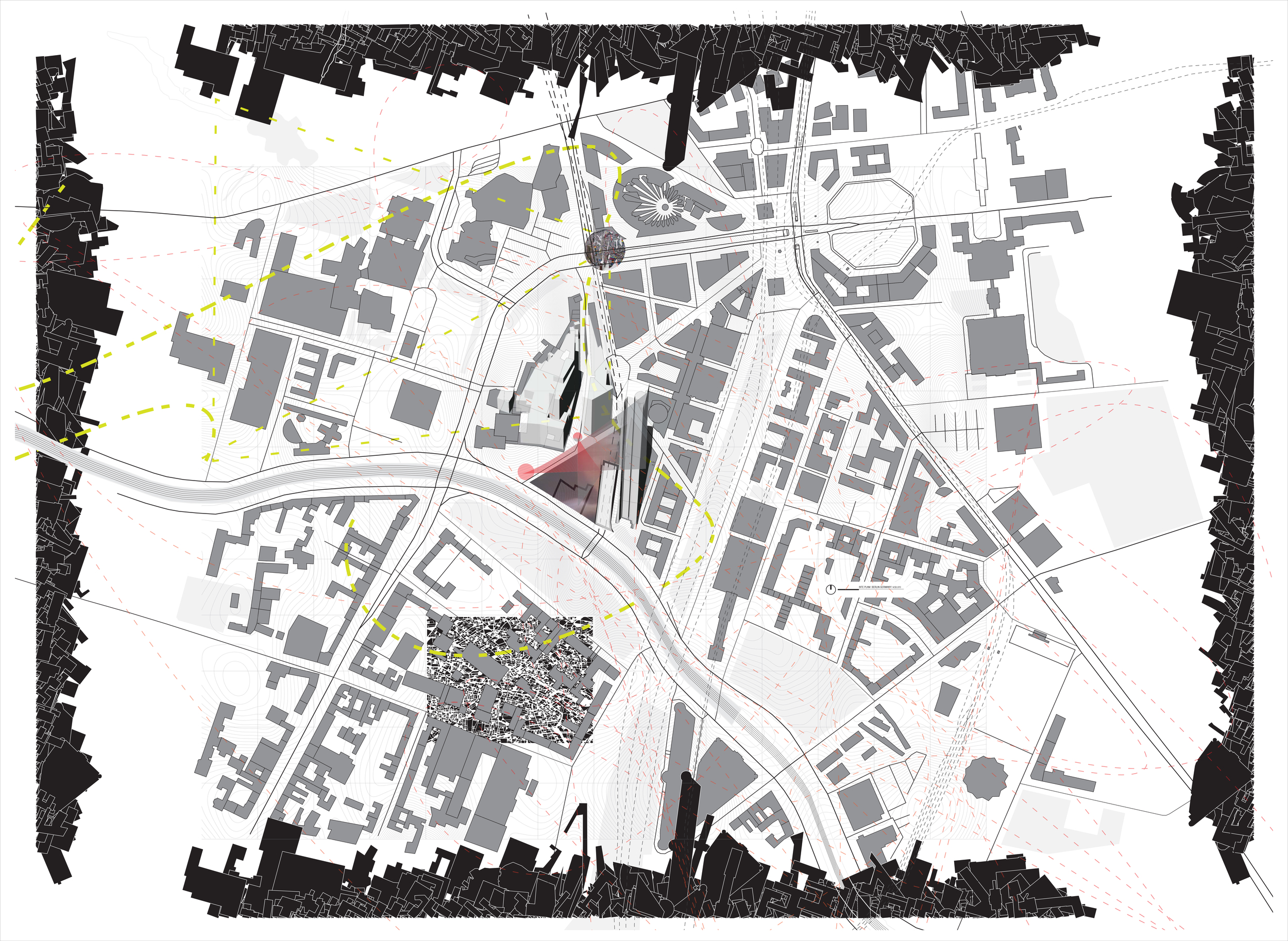
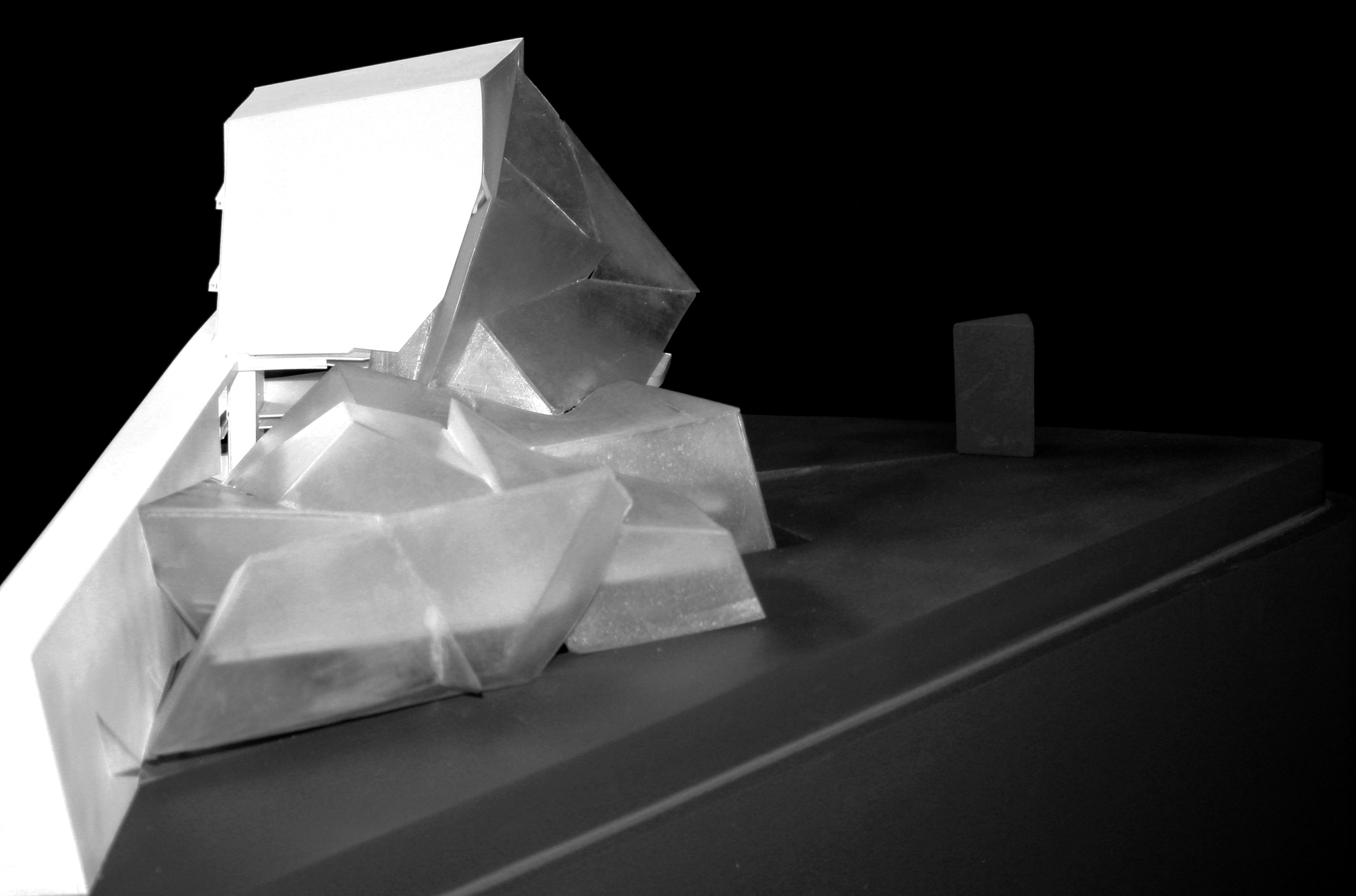
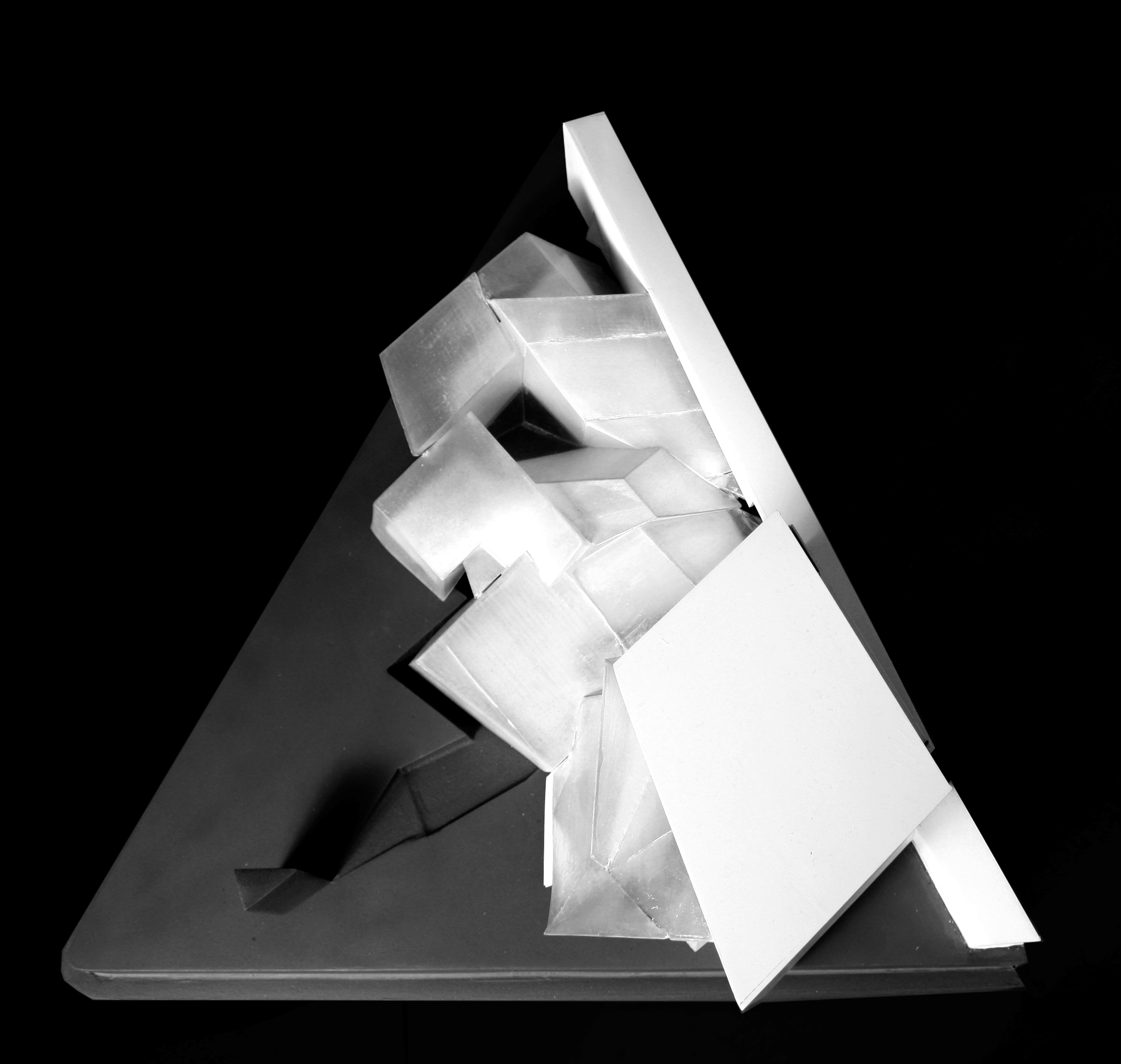
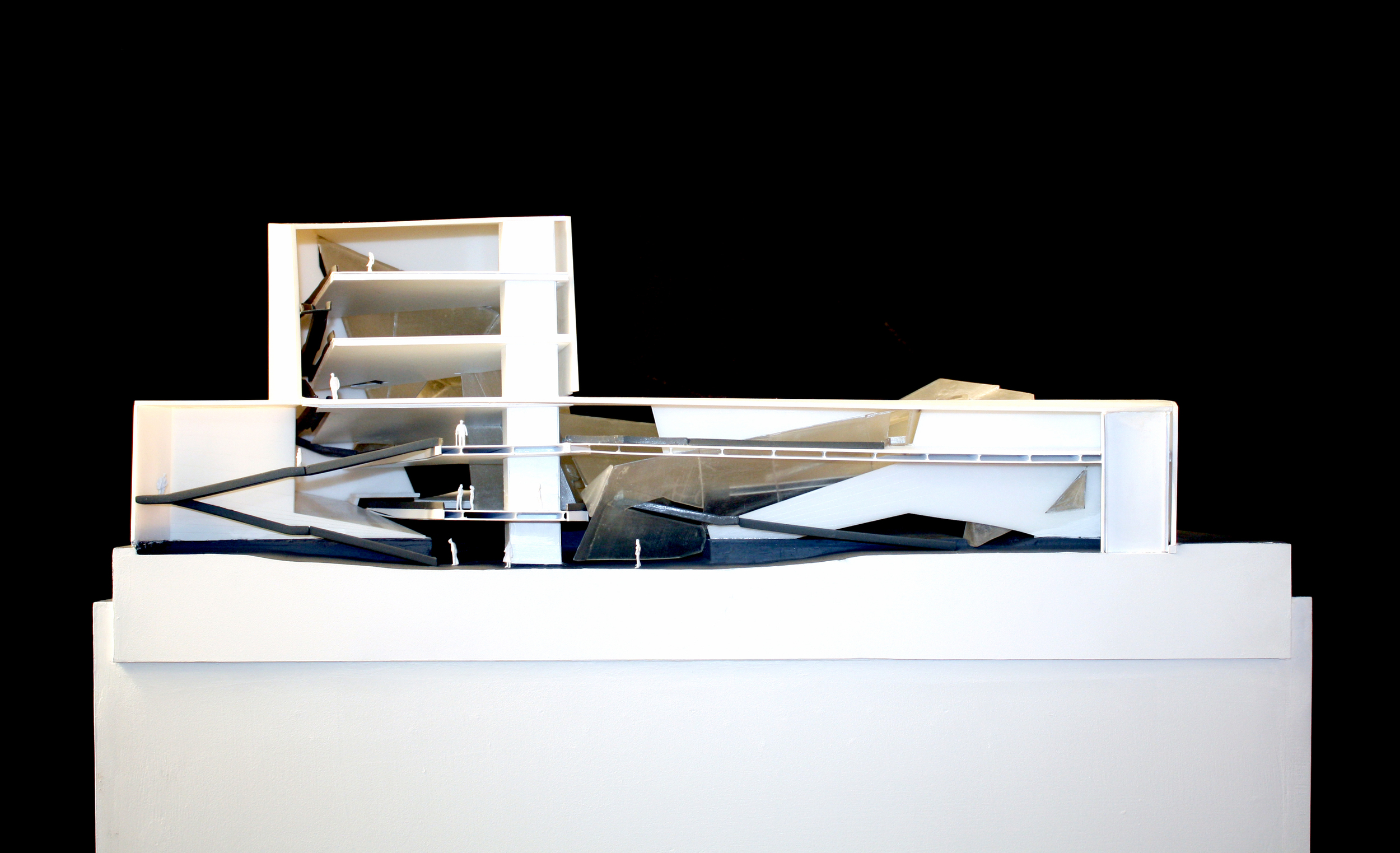
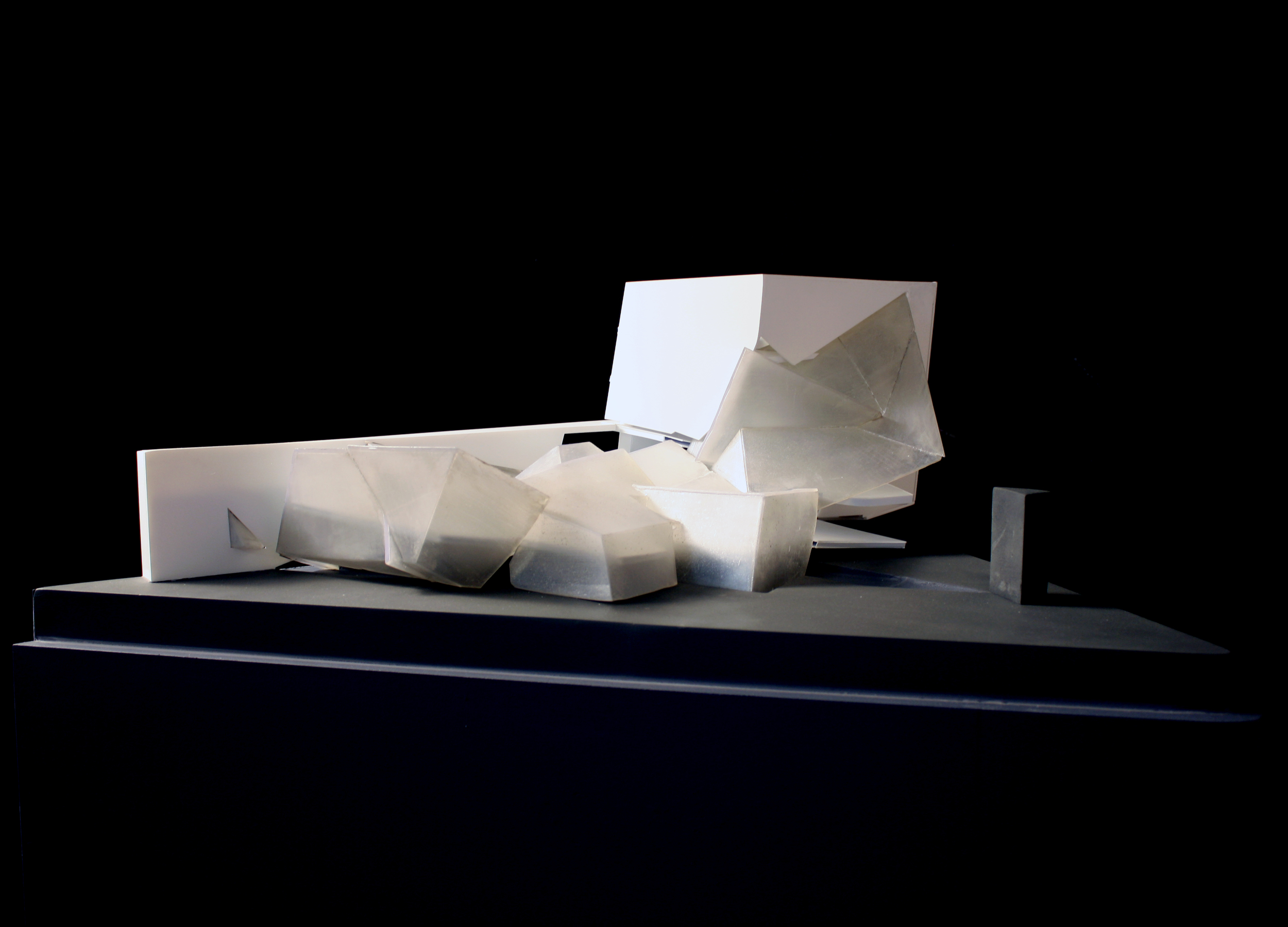
In an era that often distinguishes between signification and technique in architecture, a technique such as shifting, can offer ways in which pure geometries lose their explicit references. This thesis reconsiders the museum, from Schinkel's Altes Museum to Mies' Neue Nationalgalerie in Berlin. An Art Museum will explore the role of the plinth and the relationship with the ground, defining the location of the gallery spaces in position to the ground line.
The pure form of city blocks has historically translated into specific formal typologies, reinforcing their conformity. This thesis seeks to overcome the homogeneity by introducing a heterogeneous set of formal relations. A strategy is to manipulate the uniform geometry of the blocks into single and discrete parts, detaching them from the city, and relating individual components to underline a hard figure. The thesis explores part-to-whole relationships at both typological and spatial scales, shifted through orientation, creating an outward form. Placing blocks within a triangular site challenges tension between figure and ground; while the manifold of approaches, and a constant social experience feed a need for an urban-oriented shift.
Alt Shift is tested as means of breaking the ground. Ramps become the primary means of circulation, promoting how visitors see each other and come off the ground, coordinating movement to the experience. In turn of the technique, the interior responds to moments of tension, erasure, and instability while leaving discernible indications of an initial state.
